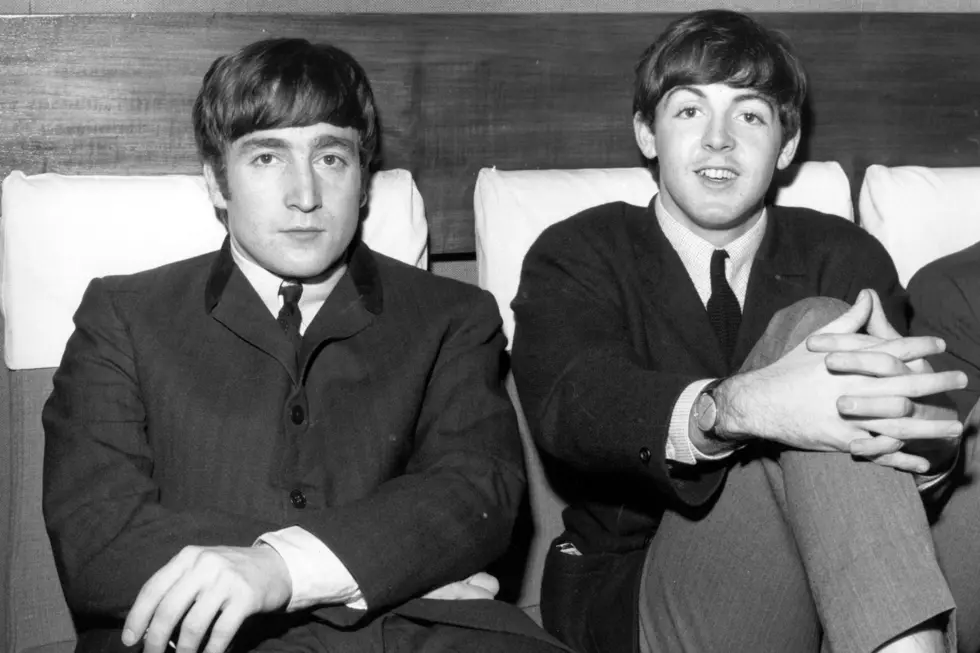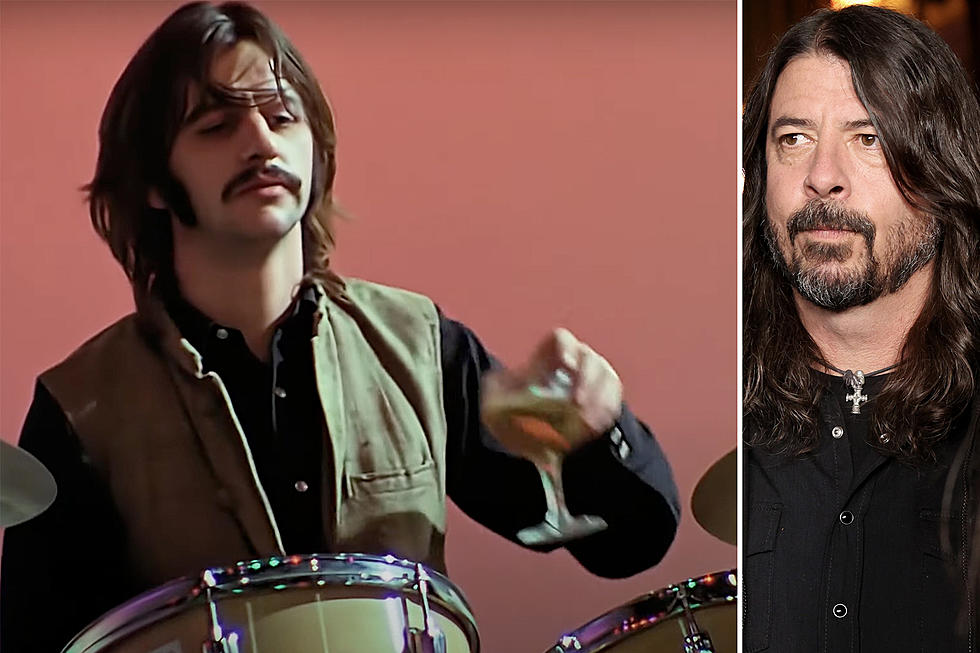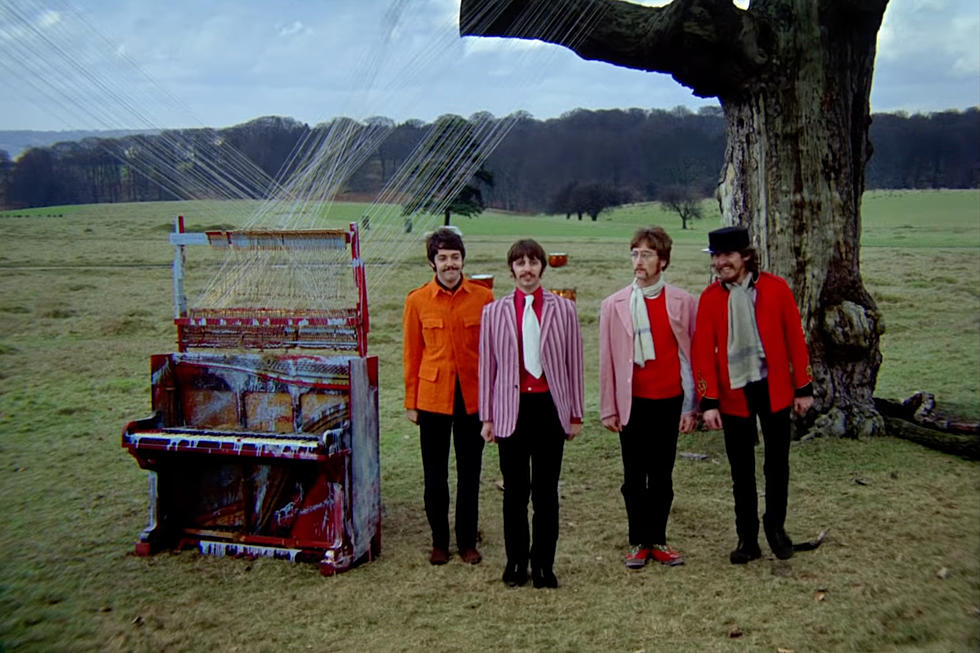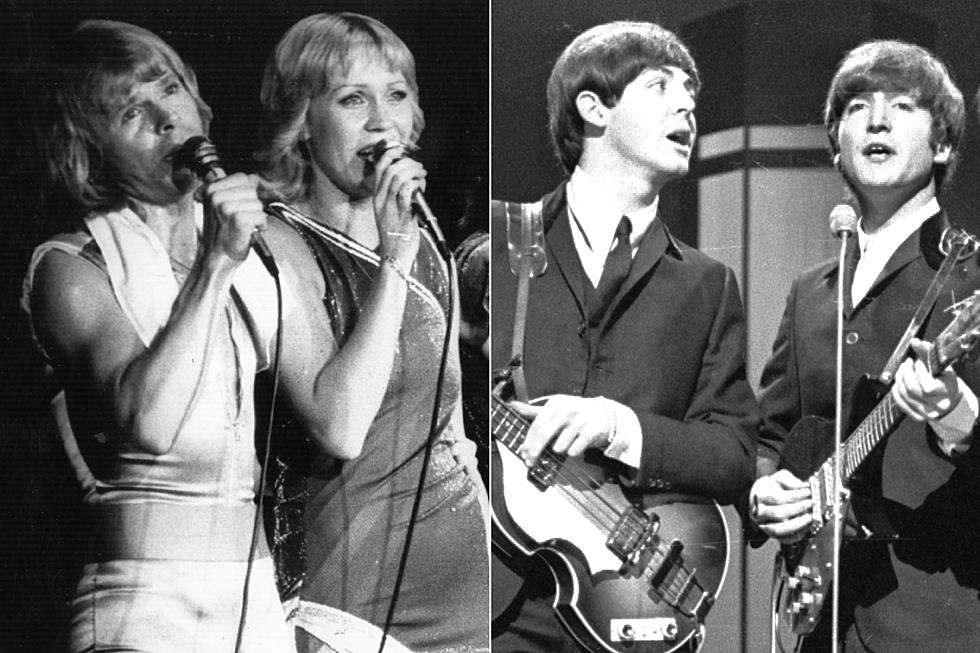
50 Years Ago: Lennon and McCartney’s Final Session Is a Bust
The Beatles had partial studio reunions on official releases into the '80s, but never with more than three members present -- and never with Paul McCartney and John Lennon in the same session.
That, as much as anything, seemed to be keeping the group apart. But the two former bandmates did collaborate during one coke-fueled, slapdash night on March 28, 1974, at the Burbank Studios in Los Angeles. It was more than enough to prompt years of comeback rumors.
Lennon was producing drinking buddy Harry Nilsson's Pussy Cats when Paul and his wife Linda McCartney unexpectedly stopped by. The two men had started tentatively, with a handshake and an inside joke.
"Valiant Paul McCartney, I presume?" Lennon said, referencing an early Beatles Christmas special. McCartney immediately responded: "Sir Jasper Lennon, I presume?" The first music made by Lennon and McCartney since the sessions for 1969's Abbey Road -- and alas, the last -- would commence from there, almost on a lark.
They found common ground again in music, even as a collection of lubricants and libations (some legal, some not) helped allay whatever bad feelings had lingered from years of fighting over what remained of the Beatles empire. Also on hand were Stevie Wonder, session guitarist Jesse Ed Davis, saxophonist Bobby Keys and, apparently, mountains of cocaine. Despite having this all-star amalgam on hand, however, the results were a goofy mess. Several '50s oldies make brief appearances throughout a series of loose, unstructured jams, including "Cupid," "Chain Gang" and "Lucille," but not much becomes of them.
The heart of the evening finds Lennon taking a trio of frustratingly incomplete passes at "Stand By Me" - a song that would eventually appear on his 1975 release Rock 'N' Roll, rising to No. 20 on the pop charts - but he spends most of the time complaining about the sound through his headphones. At one point, Lennon's vocal drops out completely, leaving only harmony contributions from McCartney and Nilsson.
Their sloppy take on Little Richard's "Lucille" (a favorite of McCartney's from the earliest days of the Beatles) features McCartney's only other significant vocal collaboration. Meanwhile, Lennon repeatedly asks for another drink, and at one point can be clearly heard saying: "You wanna snort, Steve? A Toot? It's goin' around." Thus, the title of the legendary, and legendarily disjointed, bootleg that followed: A Toot and a Snore in '74.
"I jammed with Paul," Lennon confirmed in a subsequent interview. "I did actually play with Paul. We did a lot of stuff in L.A., but there were 50 other people playing -- all just watching me and Paul."
Lennon was on lead vocals and guitar, with McCartney singing harmony and playing the drums. Wonder also provided a few vocals and played electric piano. Linda took over on the organ, while Lennon's mistress May Pang played tambourine. Nilsson sings some, too. The group is rounded out by Davis on guitar, Keys on sax and Ed Freeman (who was producing Don McLean in an adjacent studio) on bass. "They made joyous music together that night," Pang remembered in her 1983 book Loving John.
As its legend grew, so did talk of a Beatles reunion - which, at the decade's mid-point suddenly seemed to be everywhere. There certainly had been tantalizing moments of detente along the way: Ringo Starr had played on both Lennon and George Harrison's first solo albums.
Harrison, in turn, had played on Lennon's second. But then all four Beatles subsequently contributed to different parts of Starr's 1973 release Ringo, with Lennon and Harrison both appearing on the Lennon-penned, "I'm the Greatest." Couple that with the buzz surrounding this L.A. meeting between Lennon and McCartney, and the rumor mill was suddenly whirring at blinding speeds. "I haven't worked with Paul because we had a pretty difficult time," Lennon said in the mid-'70s. "But now, we're pretty close."
Comments like that probably led to overtures about one-off Beatles appearances, some of them promising relatively paltry sums (Lorne Michaels of Saturday Night Live memorably offered them $3,000) and others eye-poppingly large. Lennon considered it, though not because of the filthy lucre.
"It's strange because at one period when they were asking me, I was saying: 'Nah, never. What the hell? Go back? Not me,'" Lennon remembered in another mid-'70s interview. "And then there came a period where I thought: 'Why not?'"
Unfortunately, the planets never seemed to align for all four Beatles at once. McCartney blamed "pot and politics" for keeping them apart, at one point - since he was briefly barred from entering the U.S. because of a drug bust, and Lennon couldn't leave because of visa problems.
Meanwhile, Harrison was launching the first U.S. tour by a former Beatle in 1974, and he acted as if he couldn't be bothered: "Everyone's enjoying being individuals," he said during one particularly contentious news conference. "We were boxed up for 10 years. So, it's all fantasy about the Beatles coming together again. If we do it again, it will probably be because we'll be broke and need the money."
For his part, Lennon said he would only consider such a comeback if the Beatles could return as a group to the studio. "Everybody always envisions the stage show," Lennon mused at the time. "To me, if we've got something to say in the studio, OK. But then I turn to the paper, and George is saying: 'Not me!' It's never gotten to the point where each one of us has wanted to do it at the same time. But I think over the time we've been apart, we've all thought: 'That might be nice.'"
Two years after the Toot and a Snore session, the Beatles were likely given pause after receiving an incredible pitch of some $230 million to play again, courtesy of Sid Bernstein. A promoter on the group's early U.S. tours, Bernstein tried to leverage the reunion as a charity event. But the four of them eventually demurred.
McCartney even wondered aloud if Bernstein had been serious about the offer. "It was just a hoax, really," McCartney said, during a tour stop with Wings in 1976. "Nobody took it seriously, amongst the four of us. He's probably all right, the promoter, but it wasn't anything we wanted to do."
Oddly enough, Michaels' far-less-lucrative bid almost lured Lennon and McCartney to a New York stage anyway. It seems that while the TV producer was making his plea as part of a 1976 Saturday Night Live broadcast, McCartney was visiting nearby at Lennon's Dakota apartment -- reportedly sharing a joint.
"We were watching it and almost went down to the studio, just as a gag," Lennon told David Sheff in one of the former Beatle's final interviews. "We nearly got into a cab, but we were actually too tired. ... He and I were just sitting there watching the show, and we went, 'Ha-ha, wouldn't it be funny if we went down,' but we didn't."
Of course, the mess that was A Toot and a Snore certainly sparks questions today about the wisdom of reuniting in the drug-addled '70s as the Beatles. Moreover, the intense pressure to live up to their legend coupled with the difficulty of working together again after having nurtured their personas for so long would have made for a situation rife with potential pitfalls.
Harrison copped to it: "I realize that the Beatles did fill a space in the '60s," he said in 1974. "And that the Beatles meant something to the people who grew up with us. But apparently, a lot of them became too attached to us, and it's a real problem when they want to live in the past. Some people are afraid to change, and that's bad."
Ultimately, the iconoclastic Lennon wasn't going to shy away because of outside forces, he said, as long as the Beatles found they could work together again. "That's another point altogether, whether it would be a good idea or not," Lennon mused back then. "If we wanted to do it, then it would be worth it. If we got in the studio together, and we turned each other on again - then it would be worth it. Sod the critics. They've got nothing to do with it. The music is the music. But it's pie in the sky. I don't care either way. If someone wants to pull it together, I'll go along."
It wasn't to be, of course. Lennon was killed by a deranged fan a few years later. The closest the Beatles ever came to reuniting in the aftermath of Toot and a Snore was when the remaining trio gathered together. First, Starr and McCartney joined Harrison for his 1981 Lennon tribute song, "All Those Years Ago."
Then, all three finished a couple of leftover Lennon demos in the '90s as part of the 'Anthology' series - though it's clear now, despite Harrison's earlier prediction, that they weren't suffering from cash woes. It seemed the time had finally come for the reunion everyone had been talking about two decades before.
Those emotional sessions found McCartney, Harrison and Starr working with Lennon once more, if only through studio magic. The first so-called "Three-tles" track, "Free as a Bird," rose to the Billboard Top 10 in 1995; the follow-up "Real Love" went to No. 11. Lennon's widow Yoko Ono, who so many blamed for the band's split, had provided the song fragments for use in these reunion sessions.
Then Harrison lost a cancer battle in 2001, leaving only two former Beatles. Had fate not intervened so cruelly, McCartney thinks a long-hoped-for studio collaboration featuring all four members would have happened by now.
"If John and George were still here, it's highly unlikely we would have had a Beatles reunion," McCartney told the Daily Express 10 years after Harrison's death. "I think we would've mellowed to the point where we would've said, 'Come on, let’s do it.' ... It would’ve been great, but I’m not a great believer in 'What if?' You can't do it, but I suppose it's nice to speculate."
Beatles Solo Albums Ranked
Gallery Credit: Nick DeRiso
More From Classic Rock Q107










